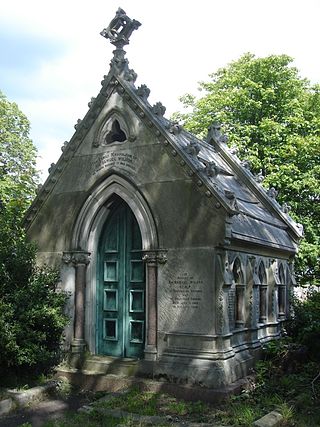Related Research Articles

A humane society is a group that aims to stop cruelty to animals. In many countries, the term is used mostly for societies for the prevention of cruelty to animals (SPCA). In the United Kingdom, and historically in the United States, such societies provide waterway rescue, prevention and recovery services, or may give awards for saving human life.

Loch Ard was an iron-hulled clipper ship that was built in Scotland in 1873 and wrecked on the Shipwreck Coast of Victoria, Australia in 1878.
Royal Australian Naval Volunteer Reserve (RANVR) was a reserve force of the Royal Australian Navy.

The Monash University shooting was a mass shooting in which a 36-year-old international student killed students William Wu and Steven Chan, both 26, and injured five others including the lecturer. It took place at Monash University, in Melbourne, on 21 October 2002. The gunman, Huan Yun Xiang, was acquitted of crimes related to the shootings due to mental impairment, and is currently under psychiatric care. Several of the people present in the room of the shootings were officially commended for their bravery in tackling Xiang and ending the shooting.

Flinders Lane is a minor street and thoroughfare in the Melbourne central business district of Victoria, Australia. The laneway runs east–west from Spring Street to Spencer Street in-between Flinders and Collins streets. Originally laid out as part of the Hoddle Grid in 1837, the laneway was once the centre of Melbourne's rag trade and is still home to boutique designers and high-end retailers including Chanel, now perched alongside numerous upscale hotels like the W Hotel Melbourne and Adelphi Hotel, loft apartments, cafes and bars.

Sir Samuel Wilson was an Irish-born Australian pastoralist and politician, and later a British Member of Parliament.
The following lists events that happened during 1874 in Australia.

The Colonial Bank of Australasia was a bank operating primarily in the Australian colony and then state of Victoria from 1856 to 1918.

Sir William John Clarke, 1st Baronet, was an Australian businessman and philanthropist in the Colony of Victoria. He was raised to the baronetage in 1882, the first Victorian to be granted a hereditary honour.
David Hastie "Bud" Adamson was an Australian rules footballer who played for South Melbourne in the Victorian Football League (VFL).

HMS Sparrowhawk was a Vigilant-class second-class despatch/gunvessel launched on 9 February 1856 at Limehouse, England and served at various stations in the Far East. By the spring of 1865, her rig was a converted to that of a three-masted barque. She was sold in 1872, converted to a sailing barque in mercantile service, and was later a coal lighter in Australia.
Peter McLean, a cabinet maker of Dumfries, Scotland, arrived in Port Phillip, Australia in February 1853 with his family during the gold rush. He crafted one of the finest and most remarkable examples of Victorian colonial cabinetmaking, no doubt with the post gold rush market in mind.
On 22 June 1883, the Geographical Society of Australasia started at a meeting in Sydney, New South Wales, Australia. A branch was formed in Victoria in the same year. In July 1885, both the Queensland and the South Australian branches started.

TheRoyal Victorian Eye and Ear Hospital is a specialist public teaching hospital in East Melbourne, Australia. It is the only hospital in Australia which specialises in both ophthalmology and otolaryngology.
Archibald Ernest Swannie was an Australian rules footballer who played for the South Melbourne Football Club in the Victorian Football League (VFL).
Elizabeth Arnold Ripper was an Australian geologist, significant for her work in stromatoporoids.

Cissy McLeod sometimes spelt Cissie McLeod was the first Indigenous woman in Australia to receive a bronze medal from the Royal Humane Society for her act of bravery when saving her adoptive mother in Darwin in the Northern Territory of Australia.
Nathan Frederick Spielvogel was an Australian author of Jewish origin, whose work has been compared to that of Judah Waten.
Martha Turner (1839–1915), known by her married name as Martha Webster, was an English-born Australian Unitarian minister, and the first woman to work as a Christian minister in Australia. She was a suffragist, and a founding member of the Victorian Women's Suffrage Society. She also was concerned with improving public health, and founded the Australian Health Society in 1875.
Thomas Richard Pearce (1859–1908), born Thomas Richard Millett, was an Irish ship master in the UK merchant marine. He served his apprenticeship on sailing ships with Aitken & Lilburn's Loch Line, and then rose through the ranks on steamships with the Royal Mail Steam Packet Company (RMSP).
References
- 1 2 3 4 "The Royal Humane Society of Australasia". www.rhsa.org.au. Retrieved 29 October 2021.
- ↑ "History". Royal Humane Society of Austalasia. Retrieved 22 February 2022.
- 1 2 "Royal Humane Society of Australasia". Museums Victoria Collections. Retrieved 20 March 2022.
- ↑ "The Mercury, Tuesday morning 25 May 1875". The Mercury . Vol. XXVI, no. 4, 580. Hobart. 25 May 1875. p. 2. Retrieved 10 July 2017– via Trove.
- ↑ "Victoria Humane Society". The Weekly Times . No. 459. Melbourne. 22 June 1878. p. 15 – via Trove.
- ↑ "Bravery Rewarded". Evening News . No. 9, 582. Sydney. 21 February 1898. p. 7. Retrieved 9 July 2017– via Trove.
- ↑ "Royal Humane Society". The Age . No. 21, 937. Melbourne. 25 July 1925. p. 20. Retrieved 9 July 2017– via Trove.